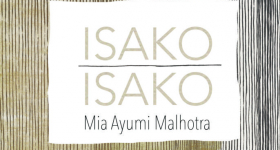Asian American literature has historically been dominated by Chinese American, Japanese American and Korean American literature. In recent years, however, we have seen an increase in literary works from previously underrepresented segments of Asian America. For example, Anthony Veasna So’s Afterparties unapologetically centers Cambodian American communities in the Central Valley; Pik-Shuen Fung’s Ghost Forest tells the stories of an astronaut family split between Hong Kong and Vancouver.
Jean Chen Ho’s debut short story collection Fiona and Jane, which follows two eponymous Taiwanese American protagonists, joins this exciting trajectory in Asian American literature. The backstories of the characters give the collection a distinctly Taiwanese American tinge. Fiona’s backstory represents a typical path to Taiwanese American citizenship: Sponsored by her mother’s brother, Fiona and her mother moved to California when she was 6. Jane’s family immigrated to the United States for her father to attend graduate school — another common trajectory for Taiwanese Americans. Fiona is beautiful, charismatic and ready to get out of Southern California. Jane — brash, yet reflective and melancholic — stays in SoCal and grapples with the aftermath of her father’s return to Taiwan. The collection is positioned as a work that speaks to the vicissitudes of female friendships. Through chapters that alternate between Fiona's and Jane’s perspectives, we see the two young women orbit each other like twin planets as they navigate their relationships with their mothers, fall in and out of love and try to figure out their place in the world.
Representation is intoxicating. Fiona and Jane landed on my desk for review because I am Taiwanese American, and I would be lying if I said that I was not thrilled to receive it. I spent a good portion of my childhood in Taiwan. When I opened the book and found myself immersed in the sights and sounds of Shilin Night Market — a place where I once slurped oyster omelets with my best friend, window-shopped with my cousins and sweated through a nervous date with a boy I loved too much in high school — I could not help but smile. There is a distinct pleasure that comes from seeing what was once so familiar to me rendered in fiction. I didn’t even realize I was missing it until I encountered it; reading Fiona and Jane was like finding a favorite sweater from years ago and reveling in its familiar embrace.
But to laud Fiona and Jane for its representation of the “Taiwanese American experience” or “female friendships” is to do it a disservice. So, too, the collection falters when it self-consciously attempts to perform this kind of representative work via exposition. In “Go Slow,” 16-year-old Fiona, Jane and Won (their best friend from the second grade) begin frequenting a sooljip, because “Fiona decided it was time we learned to drink.” They befriend the waiter, Sung, who eventually invites them a small gathering of young men in a seedy motel room. At one point in the night, Jane discovers that Fiona and Won kissed without her knowledge. The chapter culminates in Jane’s realization: “Sure, there was plenty to envy about her [Fiona], but I’d never felt anything close to competition between us. Until tonight. Until I learned she’d kept a secret from me.” This explanation signals a shift from the beginning of the short story, when Jane tells us, “We were best friends; we shared everything.” I questioned if these moments of exposition were necessary. I found myself more drawn to the scenes in between: for example, when Fiona told Jane about the kiss and Jane “had more questions but didn’t ask them” or when Fiona “smiled then shook her head, then looked away” when Jane repeated a pre-arranged signal for leaving Sung’s party. Without leaning on exposition, these scenes evocatively render two people who love each other but ultimately remain at one remove from one another, separated by a gap of words left unsaid and moments of quiet disappointment.
The collection is, at its core, about Fiona and Jane: young women who are undoubtedly flawed but striving nonetheless to do right by themselves and each other. Beyond representation, the collection shines when Ho’s curiosity about her characters takes lead. At its best, Fiona and Jane tells enthralling narratives about real people. And perhaps it is precisely as we follow Fiona and Jane through the ups and downs of their particular lives that we discover something not about the “Taiwanese American experience” or “female friendships” but about what it means to love and be loved.










Comments